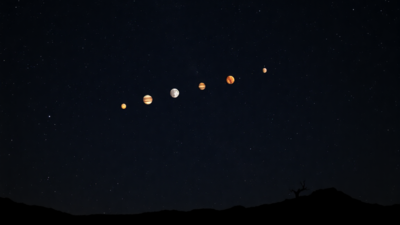- News
- Science News
- Planetary parade 2025: When and where to witness this in India
Planetary parade 2025: When and where to witness this in India
Skywatchers are in for a celestial treat as six planets—Venus, Mars, Jupiter, Saturn, Uranus, and Neptune—align in a rare astronomical phenomenon. This spectacular display will be visible from January 21 to January 31.
An official told the news agency PTI, that Mars, Venus, Jupiter, and Saturn will be visible to the naked eye, creating a stunning formation in the evening sky.
The official explained that while Mars, Venus, Jupiter and Saturn will create a visible spectacle observable without equipment, viewing Neptune and Uranus will require optical aids such as binoculars or telescopes.
What is a planetary parade?
The presence of bright planets like Mars, Jupiter, Saturn and Venus in a single viewing makes this particular event particularly rare and distinctive. Jupiter shines brightly, while Venus and Mars are reaching their peak brilliance in the post-sunset sky for the first time in years.
With Saturn still prominently visible and Mercury making occasional appearances, four or five planets can easily be spotted with the naked eye, creating a captivating celestial spectacle.
Space.com explains that all planets in our solar system follow orbital paths around the sun along a specific plane known as the ecliptic. This results in planets appearing in a linear formation when viewed from Earth. Although these linear arrangements are regular occurrences in our sky, they are typically classified as planetary alignments.
When and where to watch in India?
In India, astronomers across India have prepared for events where people can witness the planets. However, if one can’t attend an organized session, several apps can guide you in exploring the night sky on your own.
The Tamil Nadu Science and Technology Centre (TNSTC) had organised a special night sky observation for the public at Periyar Science and Technology Centre in Kottupuram from Jan 22 to 25 (from 6pm to 8pm).
"You can see Venus, Jupiter, Saturn and Mars from your terrace or from the beach. Mars will rise around 9pm," said I K Lenin Tamilkovan, executive director, TNSTC.
The Department of Science and Technology's Pathani Samanta Planetarium in Bhubaneswar has established suitable facilities to accommodate astronomy enthusiasts for this event.
The official confirmed that visitors can observe this uncommon phenomenon daily between 5.30 pm and 7.30 pm.
End of Article
FOLLOW US ON SOCIAL MEDIA
Hot Picks
TOP TRENDING
Explore Every Corner
Across The Globe


